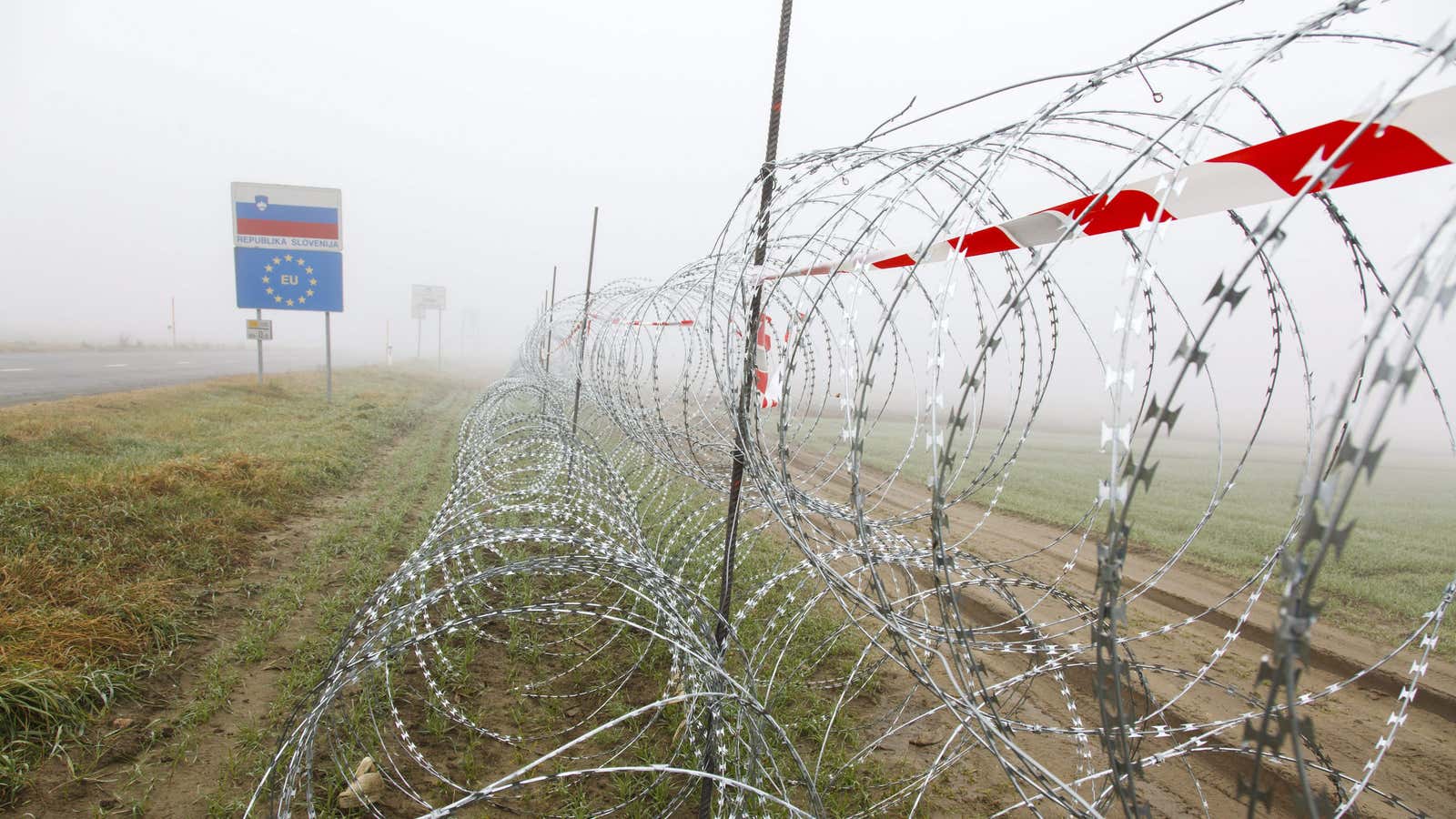In 1989, the fall of the Iron Curtain and the removal of border fences along the edges of the former Soviet Union wasn’t only the first step in today’s borderless Europe where citizens are able to travel more freely. It also created the backbone of the so-called European Green Belt: a movement for environmental protection of the natural areas that characterized the region of the former regime.
Starting from the border between Finland and Russia, conservationist groups developed the belt southward, working to preserve wildlife and ecosystems around the former fences throughout eastern Europe and the Balkans, till it reached the borders between Albania and Greece, and between Bulgaria and Turkey, before ending in the Mediterranean and Black seas.
After decades of being literally fenced off from western Europe, the region’s wildlife—including carnivores such as wolves and lynx—began to thrive. Getting rid of physical borders allowed animals to expand their habitats, and since there wasn’t much human development in these transboundary areas, it turned out to be a place where wildlife could really thrive.
But, after a few decades of somewhat free movement of people, goods, and animals, since 2015 fences have started rising up again. For example, a fence has been built between Slovenia and Croatia to stop the movement of refugees between the countries. A side effect has been to also stop the movement of wildlife, according to a study titled Border Security Fencing and Wildlife published in PLOS Biology.
A team of researchers led by John Linnell of the Norwegian Institute for Nature Research found that the fences are quite literally killing animals: by limiting their access to seasonal resources that might be on the other side of the fence, and separating groups of the same species, the fences have resulted in increased inbreeding, weaker animals, and dropping population numbers.
Though the full extent of the current border fence is uncertain, the authors of the study estimate a total of 30,000 km (about 18,500 miles) across Europe. Many of these fences should be temporary—freedom of movement within Europe is still, after all, a right—but their installment has already started to harm several species, including deer, moose, bison, and some carnivores.
For instance, there are 10 or 11 packs of wolves living by the Slovenian-Croatian border, and half of them are used to living on both sides of the fence, according to the study. Not being able to cross the border to reach the population on the other side may cause the wolves to inbreed, and potentially become weaker. Lynx also face a harsh destiny: they’re getting caught in sharp razor fences, and dying. Their population is dwindling, and may be pushed to local extinction. Bears, too, might be under threat, though their populations are large enough to survive on either side of the fence in the short term, says the paper.
Similar situations have emerged in central Asia, with fences between Mongolia and China, for example, limiting the movement of the herbivore population there, and in North America, where fences between Mexico and the US destroying wildlife populations of the Rio Grande Valley, one of the most biodiverse regions of North America.
